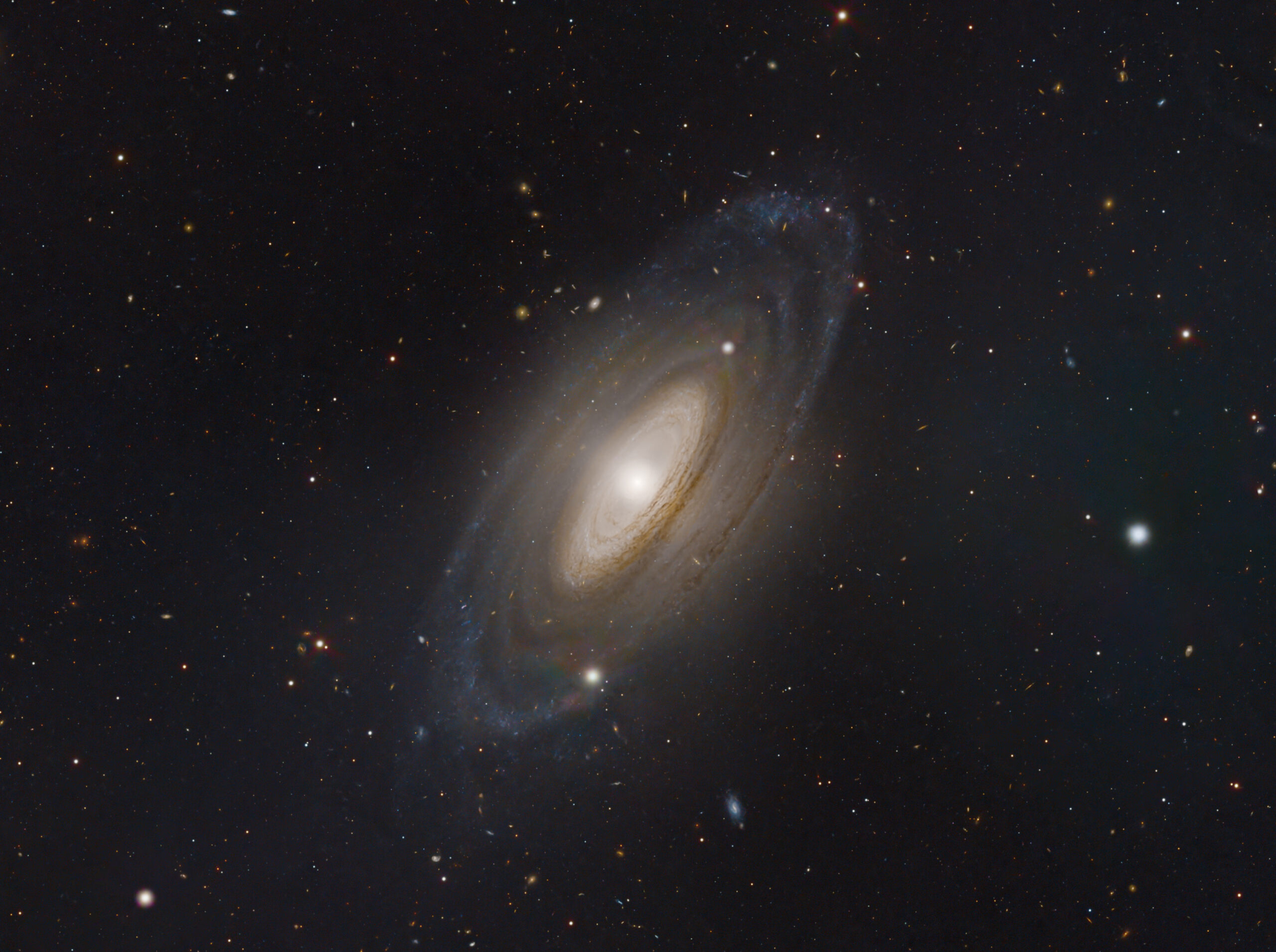
NGC 4698: A Galaxy with a Twist in the Virgo Cluster
Located about 55 million light-years away in the Virgo Cluster, NGC 4698 is a spiral galaxy unlike most others.
At first glance, it displays the classic structure of an early-type spiral: a bright, smooth bulge surrounded by a well-defined disk, faint spiral arms, and delicate dust lanes tracing the midplane. But a closer look reveals something unusual—the central bulge is tilted with respect to the surrounding disk, a rare configuration known as a polar bulge.
This feature makes NGC 4698 an intriguing subject. The stars in the bulge orbit along a different axis than those in the disk, suggesting a complex evolutionary history—possibly the result of an ancient merger or prolonged accretion of material from a different direction.
In this image, the bulge appears bright and elliptical, wrapped in a golden glow from its older stellar population. Surrounding it, a blue-tinged disk curves outward into faint, filamentary spiral arms. Dust lanes streak diagonally across the central light, reinforcing the subtle geometric misalignment between bulge and disk. The arms themselves are diffuse and asymmetrical, as if the galaxy’s structure is still settling from some earlier disturbance.
NGC 4698 spans about 3.2 by 2.4 arcminutes on the sky, corresponding to a physical size of roughly 51,000 by 38,000 light-years.
While less flamboyant than grand design spirals, NGC 4698 offers a rare glimpse into a galaxy with decoupled structure—a system that holds contains a record of complex internal dynamics and external interactions.
Imaged in LRGB on my Planewave CDK 1000 at Observatorio El Sauce, Chile.
Image acquisition and processing: Mike Selby